“Children are liable for their parents”
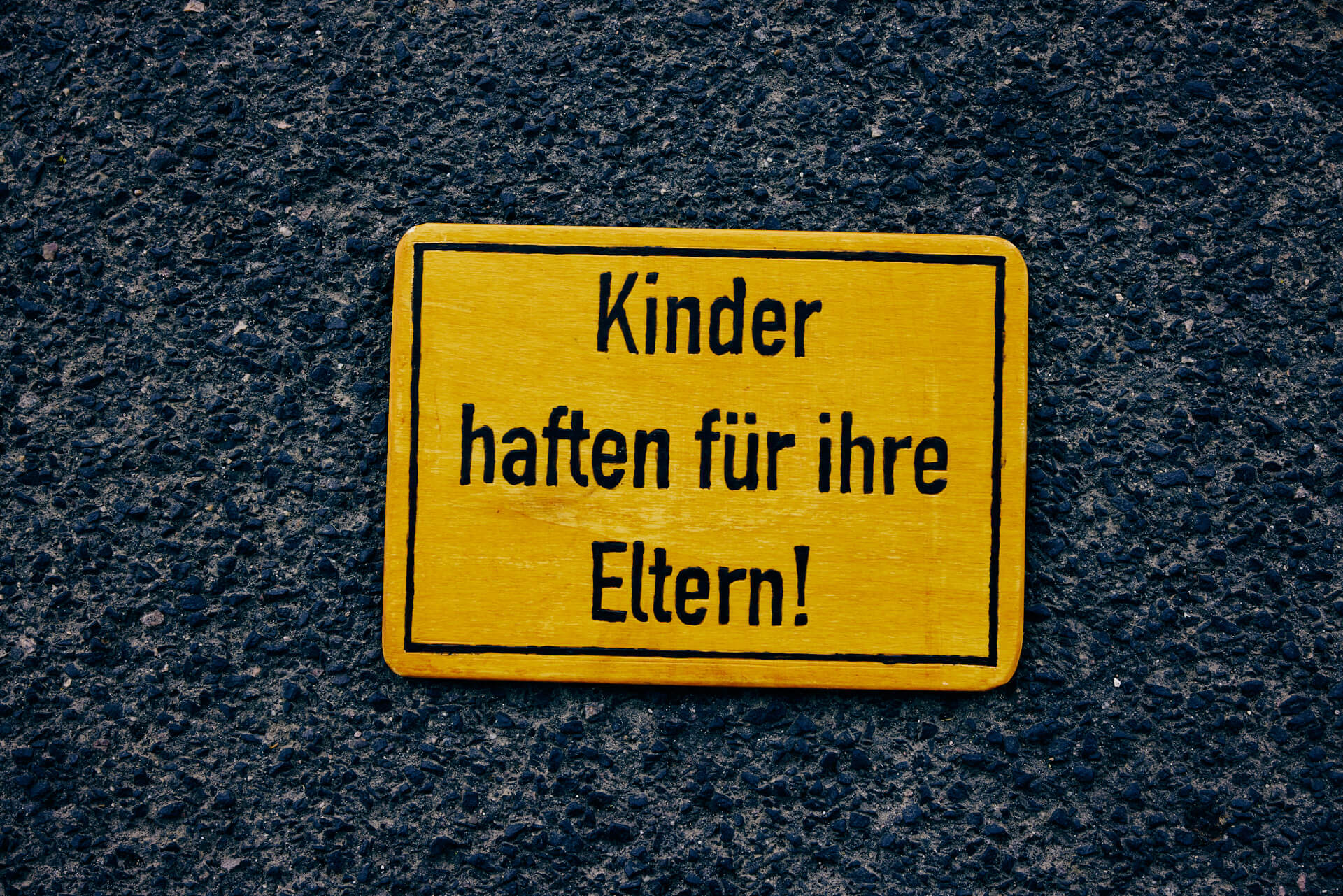
Welcome to the exhibition and further information! Take a look around, let yourself be inspired. Send me your feedback and ideas.
The BUNDmagazin (Magazine for supporters of Friends of the Earth Germany) writes: “Here the destruction of the environment, there the commitment to the alternatives: Niko Martin shows the contrasts in impressive pairs of images.”
In Germany, construction sites often have signs such as “Do not enter the construction site! Parents are liable for their children!” ( – „Betreten der Baustelle verboten! Eltern haften für ihre Kinder!“).
But isn't it rather the other way round in our lives and those of “our children” – the future generations? – They have to bear the consequences of the (non-)actions of their predecessorsgenerations.
In the project, places that threaten our future were and are marked for a moment with a sign “Children are liable for their parents” „Kinder haften für ihre Eltern!“ and captured for longer.
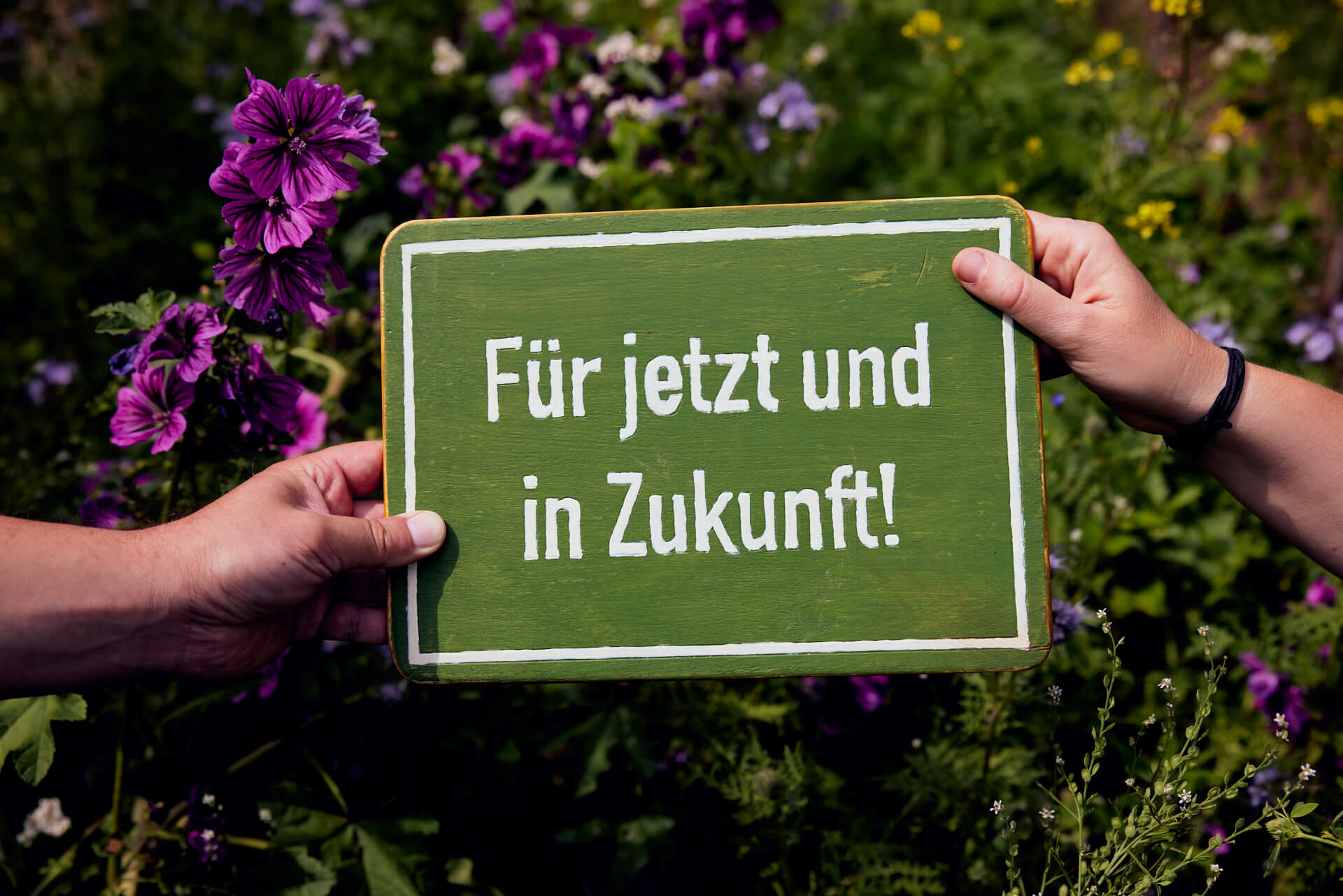
More important for our lives are positive images of the future and active sustainable action. Accordingly, places, projects, committed people “for now and in the future!” („Für jetzt und in Zukunft!“) are portrayed who are sustainable and fit for the future or who are committed to and act for it.
The project is funded by the Hessische Kulturstiftung (Hessian Cultural Foundation). Thank you very much! The Hessische Kulturstiftung is not responsible for the content.
Face-to-face events “Children are liable for their parents” Photo exhibition
Upcoming events
From November 22, 2025, a pair of images will be on display in the Schaufenster-Galerie XI. in Darmstadt. Instagram: https://www.instagram.com/galerie.xi_da/
Would you like to be informed about further events and projects?
Previous events
- Exhibition at the Medienbäckerei in Darmstadt:
- Friday, 19 November 2021, 7 pm, Vernissage.
- Saturday, 20 November 2021, 1 to 7 pm, CET.
Loan touring exhibition
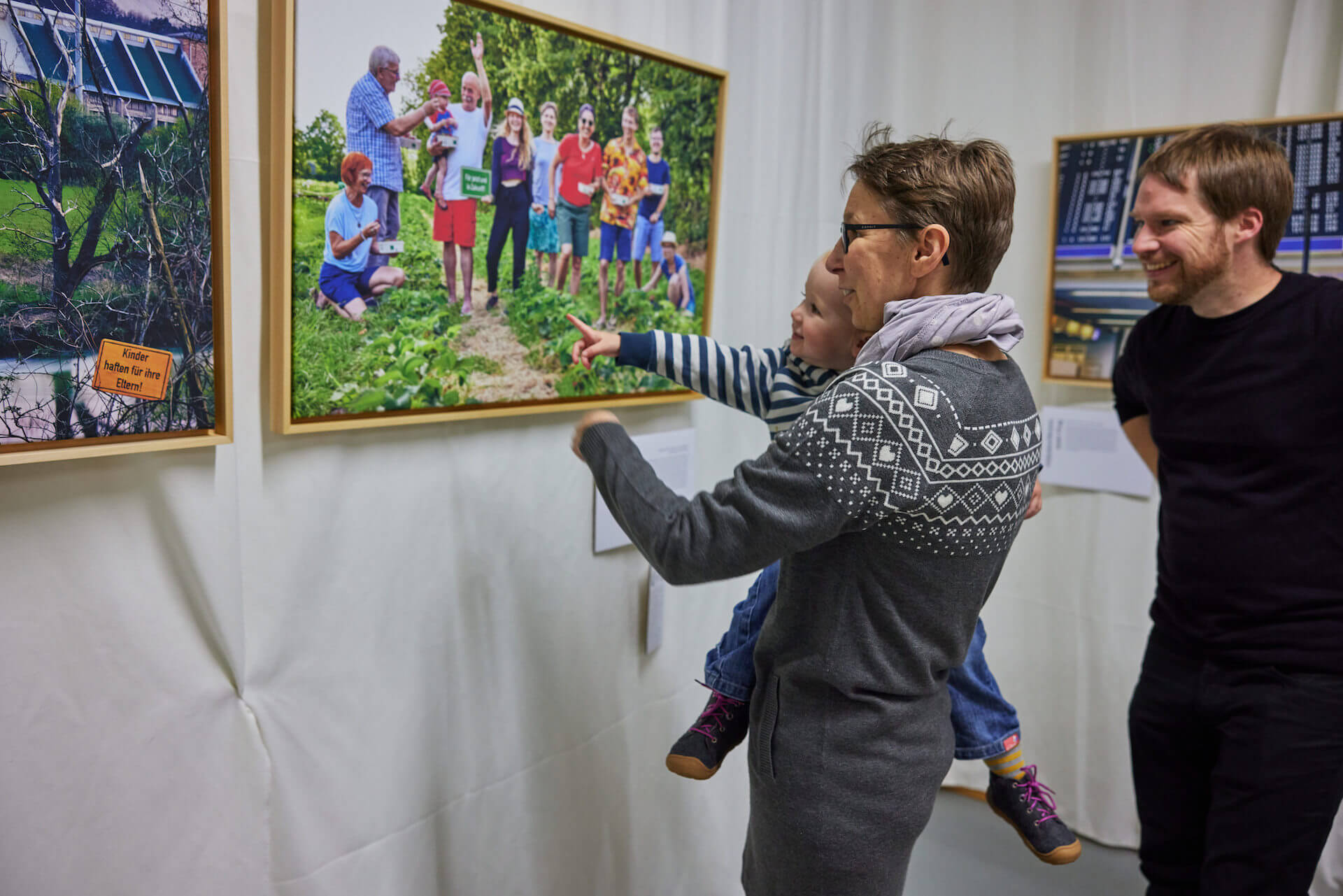
The exhibition can be loaned out: Currently there are five pairs of pictures, each photo is printed on canvas (approx. 90 x 60 cm) and provided with a shadow gap frame made of lime wood and two hangers (left/right, serrated hanger W-3300 Wall Buddies; also for rope suspension). The accompanying texts are printed on text boards that are attached to the picture frames. The exhibition is suitable for indoor use. When hung side by side, a pair of pictures requires just under two metres of wall length. The distance between the pairs of pictures should be about half a metre. Together with an overview board, this results in a wall length of about 13 metres. A (partial) back-to-back hanging in sufficiently large rooms is conceivable.
Transport, insurance and any local costs must be covered by the institution that the exhibition is loaned to.
Online exhibition
The following pairs of images were created in 2021. The series continues and an exhibition of canvas prints is available for loan. You can click on the pictures to enlarge them.
Electricity is life?
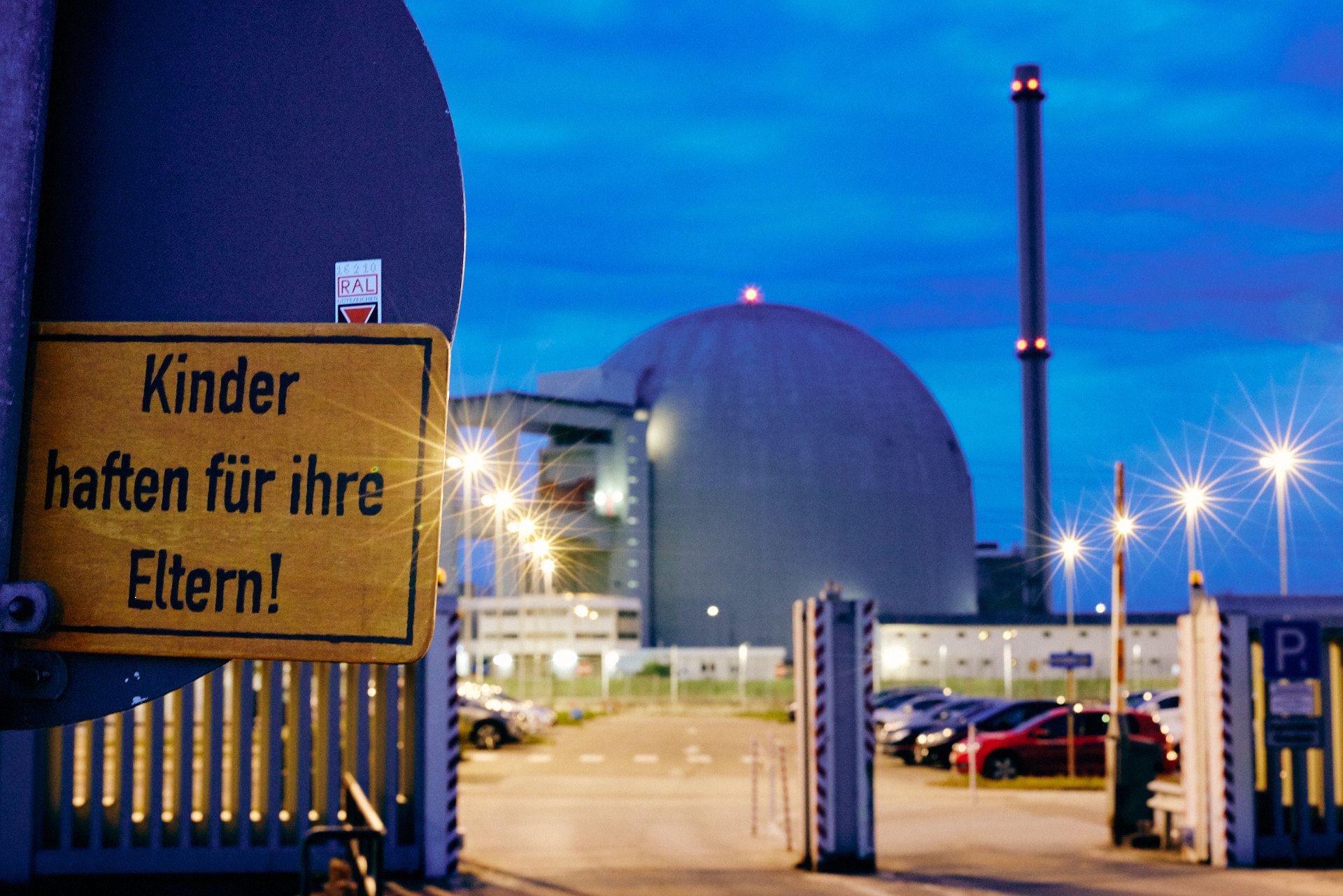
In the wake of the Fukushima nuclear disaster, the Biblis nuclear power plant had to be shut down in 2011. A safe final repository is being sought for the highly radioactive waste. This must provide safe containment for a period of one million years. The interim storage facility at the Biblis site has been approved until 2046.
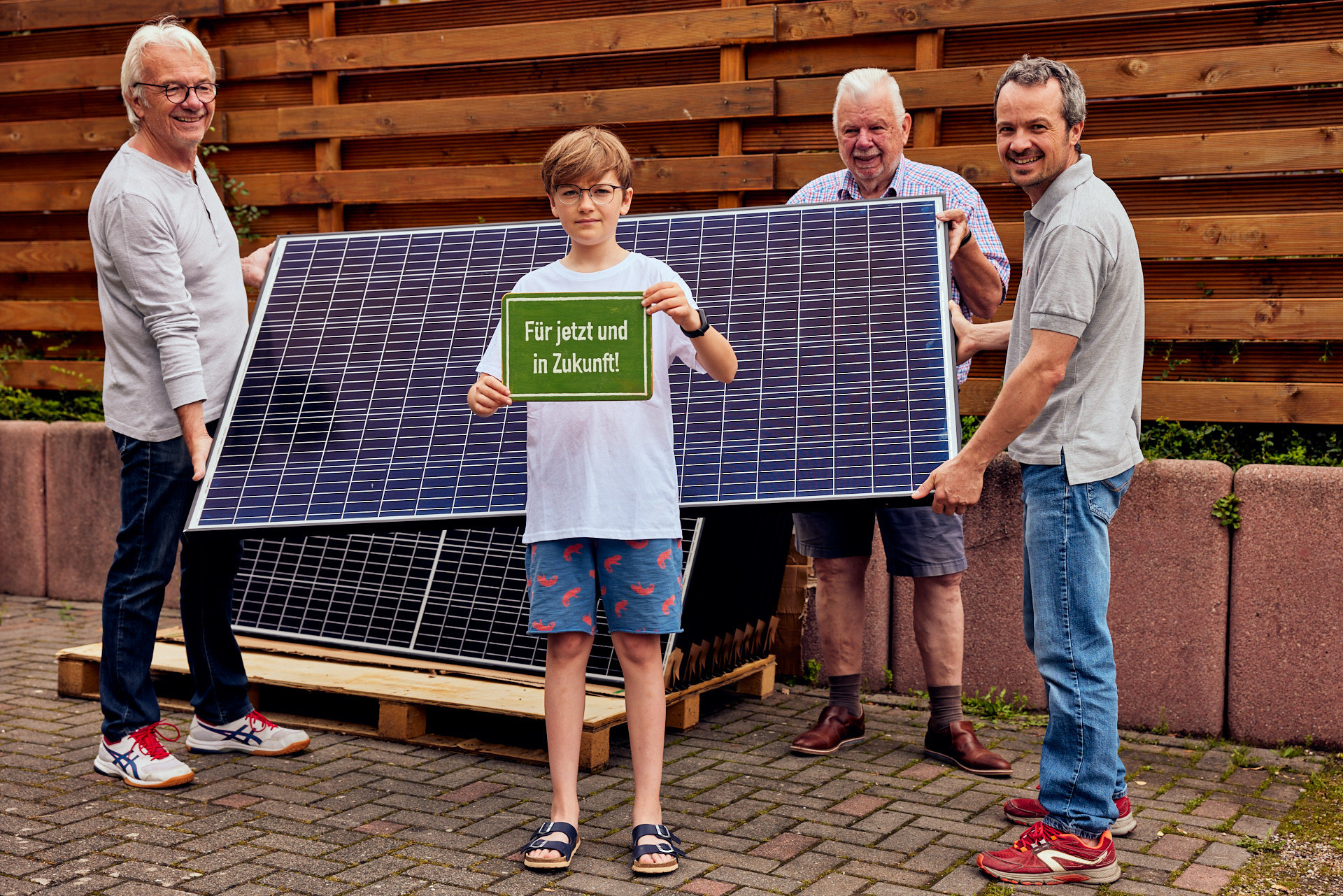
Solar for everyone: Plug-in solar modules can be used to generate electricity from sunlight, which can be used directly in the household grid with a small inverter and plug. Walter Schüller found the idea so convincing that he organised a collective order based on the Roßdorf model. “Your first crowd is your family” and he found the others by using a self-built, contactless information stand with an exhibit at the farmers' market. So in the first round there were 28 people who ordered 75 modules. A continuation is planned.
Farming for tomorrow
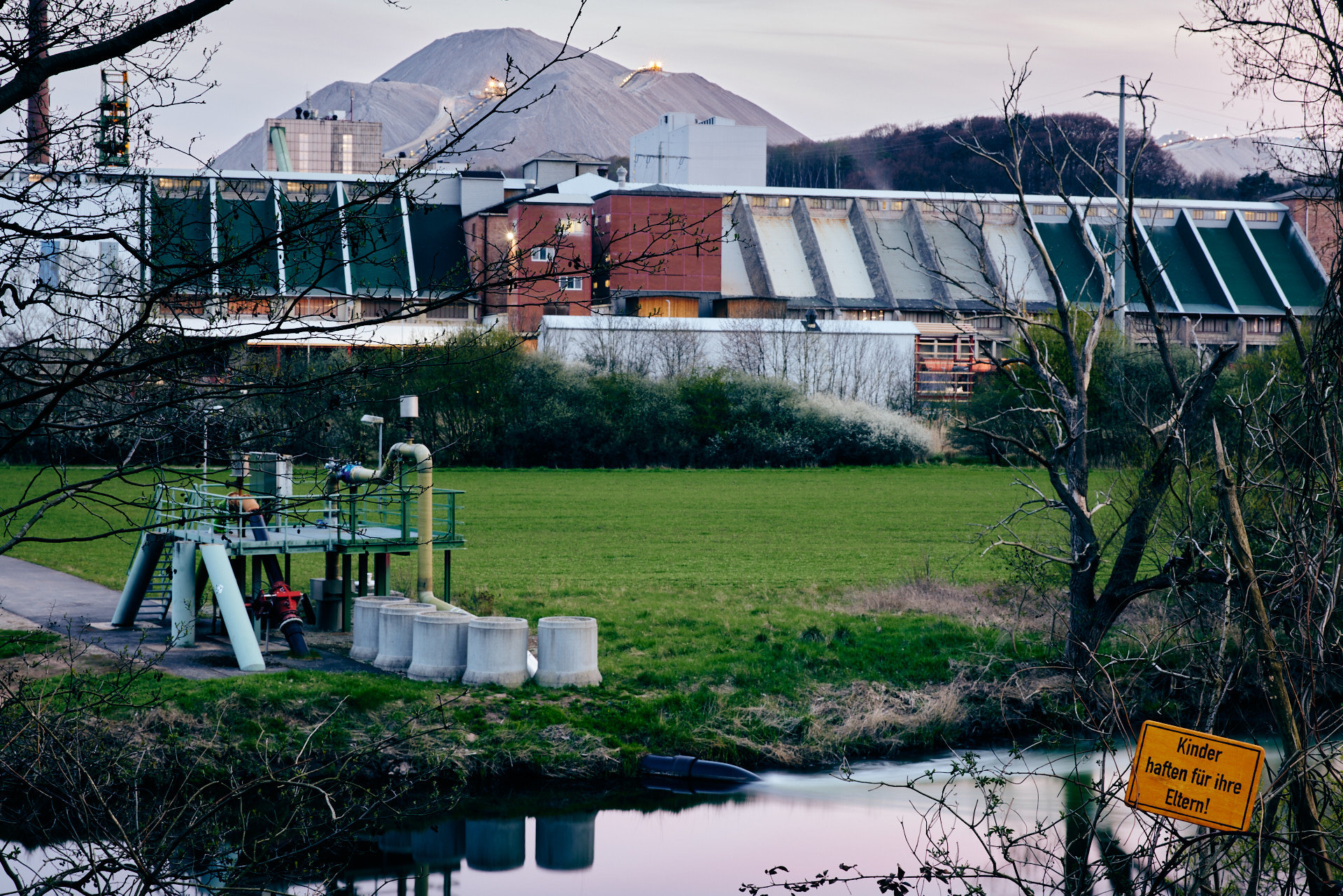
Potash and magnesium minerals are part of the nutrients necessary for plant growth. Thus, salts containing potash are used in agriculture as mineral fertiliser. But the production residues are dumped into the Werra, among other rivers. This turns the Werra and Weser into a saltwater river and has destroyed the species-rich freshwater ecosystem. The disposal issues must also be solved for the time after the reserves there are exhausted in the 2060s. In the case of the scarcer plant nutrient phosphorus, we are further along in terms of a circular system. Although potash fertilisation is permitted in organic farming, it is more strictly limited than in conventional agriculture.
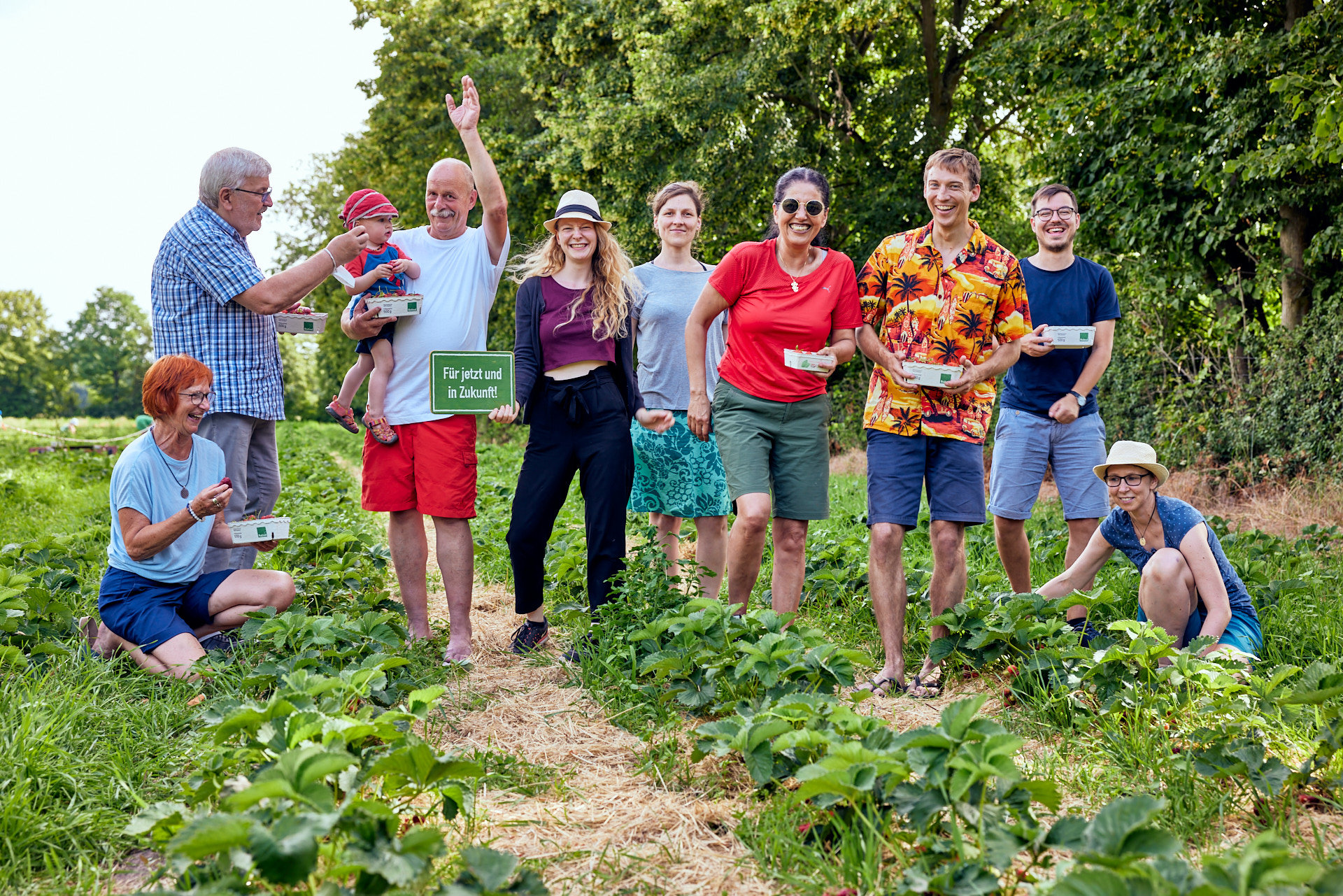
The family farm of Ingrid and Arno Eckert produces vegetables, cereals and fruit with and for two groups from Darmstadt and Frankfurt am Main according to the model of community supported agriculture. The first group approached the at that time still officially conventionally managed farm in 2011. Since 2016, the conversion to organic farming has also been completed through the groups' involvement. Besides, there is always something for everyone to learn: Why were there no earthworms in the sandy soil? – You always have to leave them some organic material on the ground, then it works out with the inhabitants below the surface of the earth.
This photo was awarded first place in the category single picture adults in the photo competition of the research project “Ecosystem services of urban regions - mapping, communicating and integrating in planning for the protection of biodiversity in climate change” (ÖSKKIP). This was about visual communication on nature's “services” for humans. The production of food (strawberries in this case) is an ecosystem service that is practised in combination with cultural performance in the form of community supported agriculture.
Build new or convert, rebuild and refurbish?
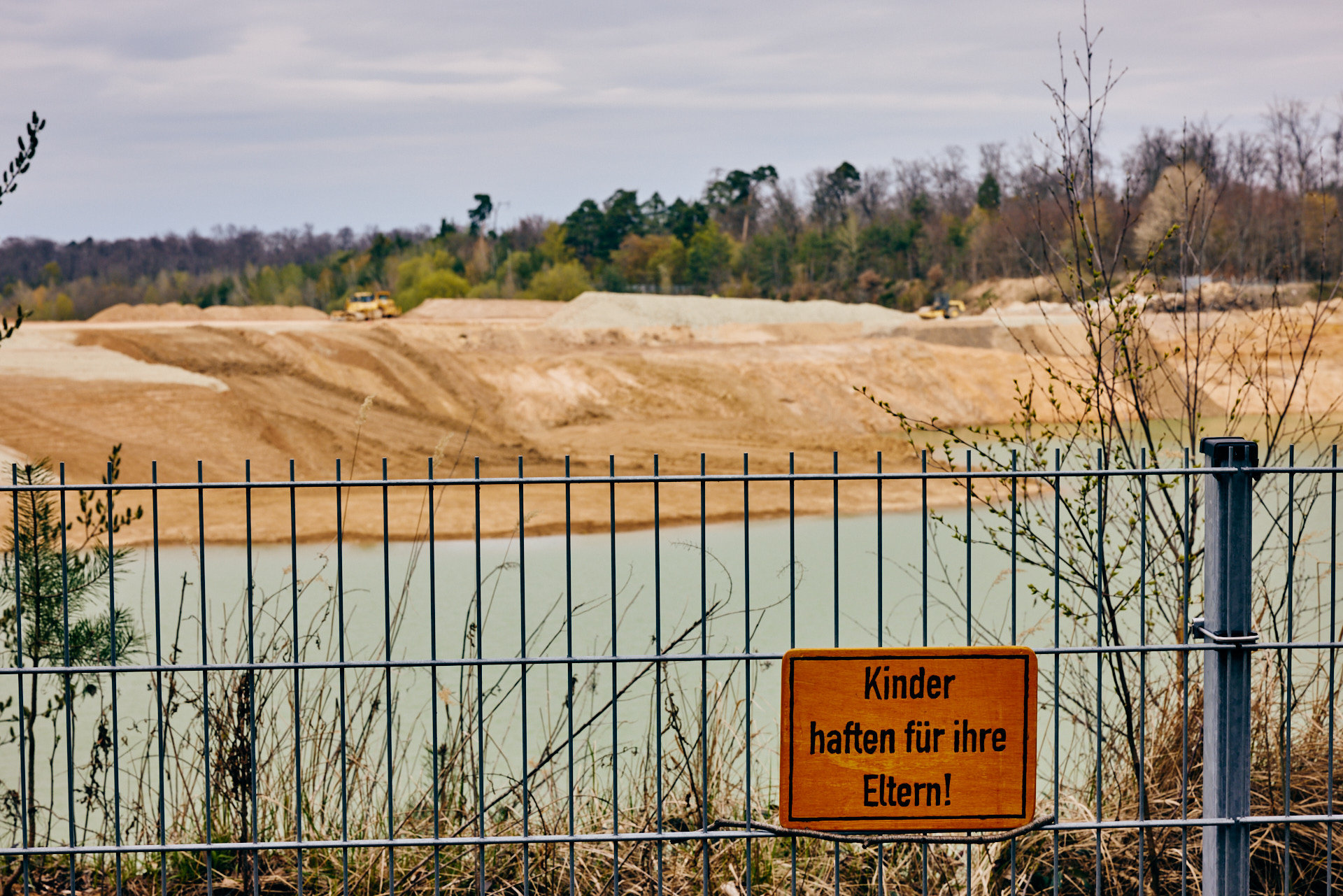
Today, concrete is the world's number one building material. In addition, gravel and sand are used en masse as aggregates for many other building materials: They are found in mortar, plaster, asphalt or in masonry bricks such as sand-lime bricks. But suitable raw materials are becoming scarce. In Germany, the roughly 2,000 sand and gravel pits can no longer meet demand. At the Langener Waldsee, a lake created by gravel and sand mining, expansion plans are facing resistance from the population and nature conservation movements.
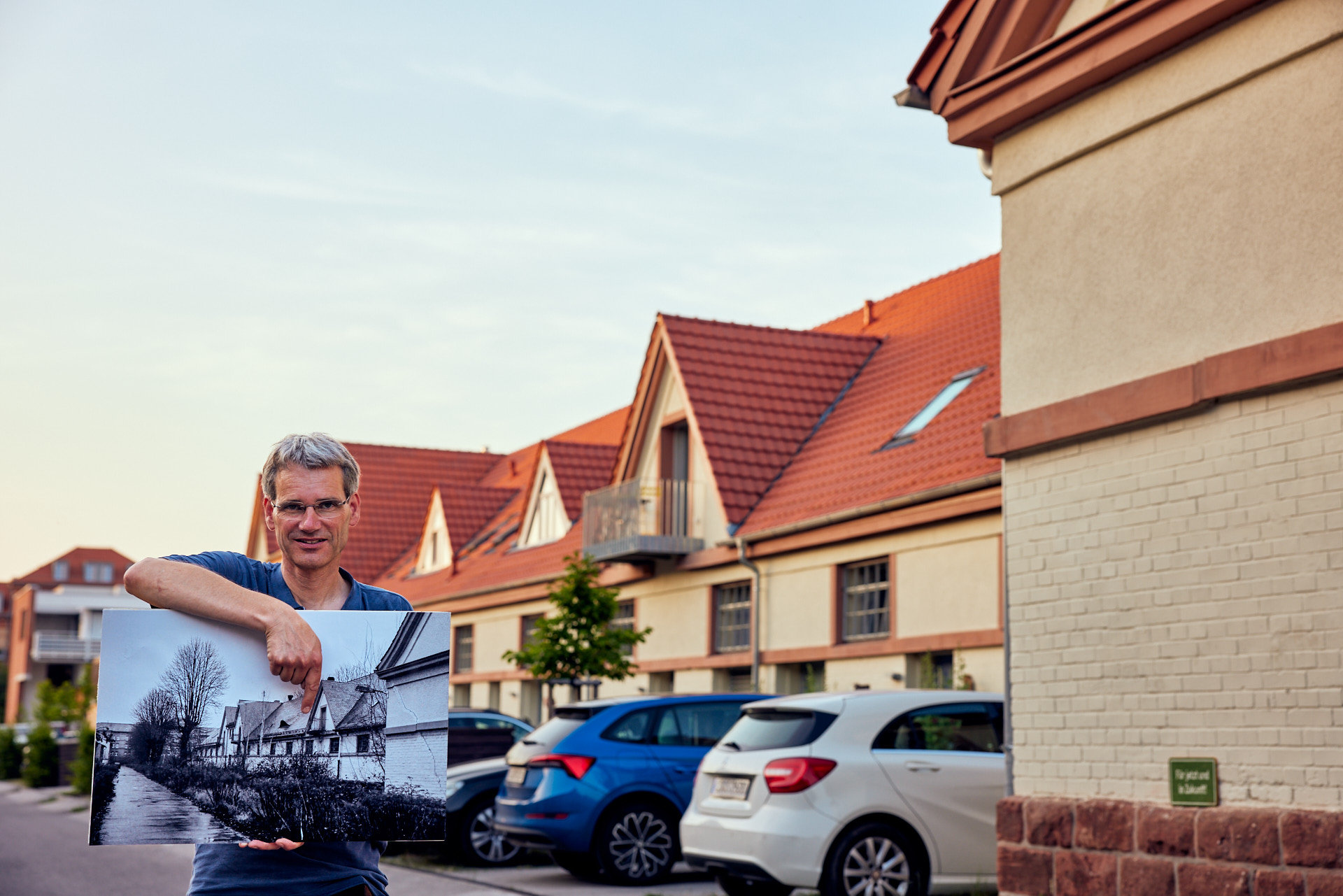
The “Baugruppe Unterm Dach” (“under one roof”) building group, initiated by an architect's office, has converted former stables and training rooms of the French army into 19 residential units. The name came from the distinctive roof shapes and the relatively free division possibilities underneath. In the process, the outer walls had to be preserved. Peter Eichenlaub came across the Baugruppe model by chance and took the opportunity to now realise owner-occupied living again. For him, the advantages of this building group were that one already knows one's neighbours, that one builds together and does not have to build completely from scratch, and that this also saves raw materials and nerves. Compared to building with a developer, you can make more quality decisions and do some things, such as restoring the historic window grilles, in community actions. The planning process went relatively quickly, as the needs expressed by the various building group members were combined by the architect's office into one proposal.
In order to compare whether a new building with current or even passive house standards is more sustainable than the renovation of existing buildings, one must also take into account the energy and resources required to produce the new building and not only the building's energy requirements. In addition, new buildings often have longer commuting distances. In this comparison, refurbishment usually performs better.
Video conferences instead of flights
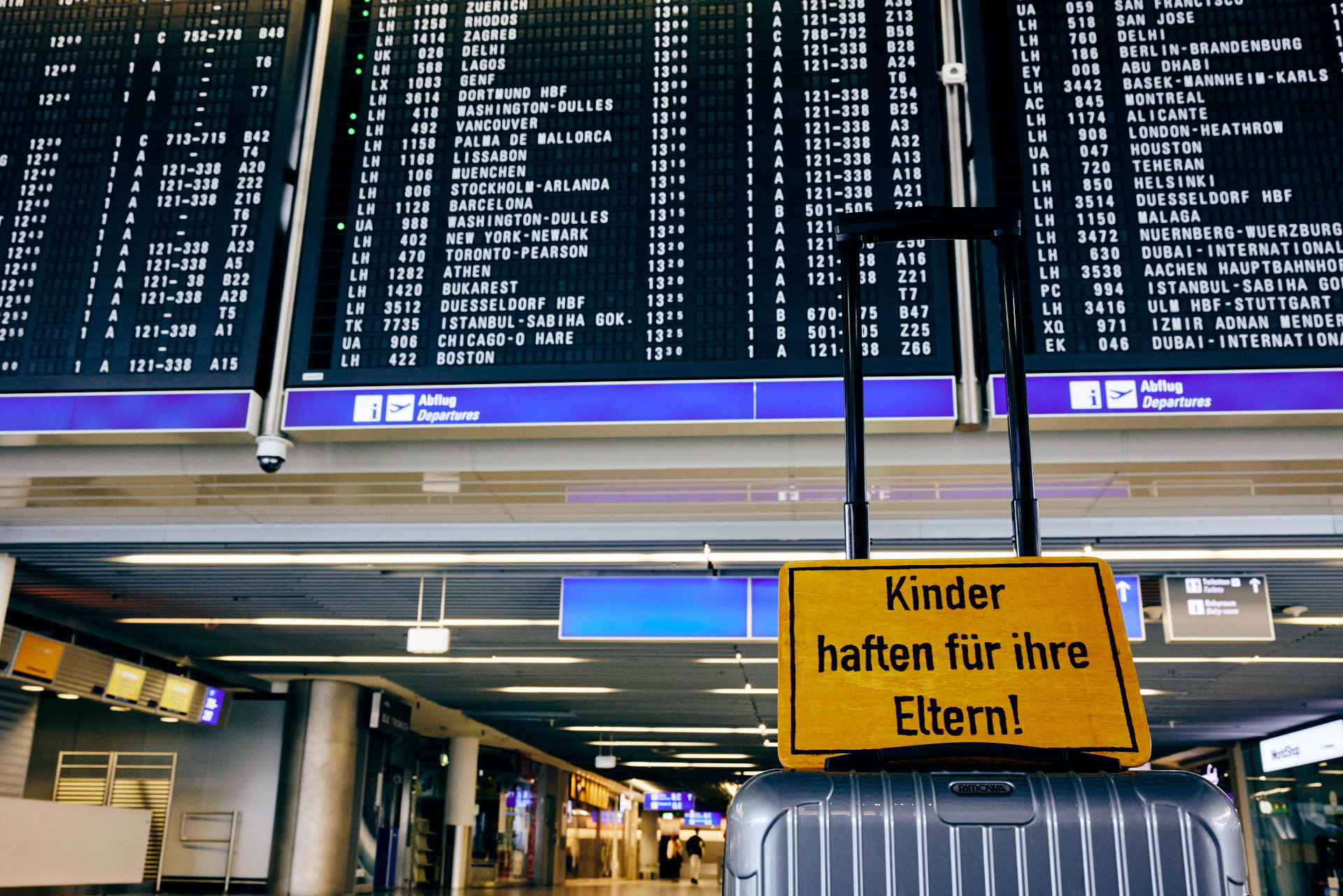
Flying is the most harmful way of getting around in terms of climate change. All in all, taking into account the effects of exhaust emissions in high atmospheric layers, air traffic contributes around five percent to global warming, about as much as global road freight traffic.
Nevertheless, the expansion at Frankfurt Airport continues for increasing cargo and passenger numbers. And the number one destination for outbound flights from Frankfurt am Main are flights within Germany. With the Corona pandemic, passenger numbers fell to the level of 1984. And after that?
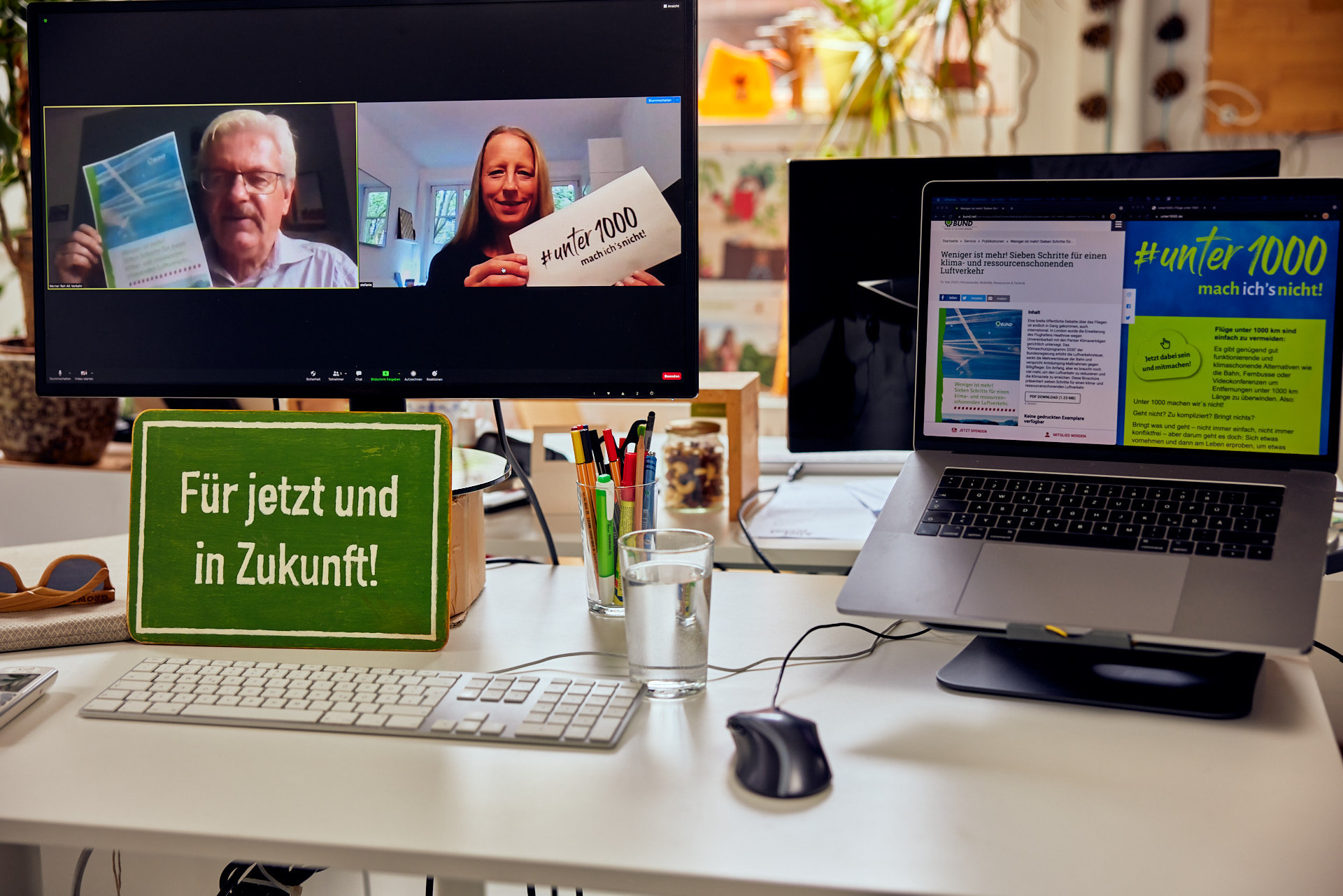
With the Corona pandemic, digital capabilities have grown across the board, and webinars and videoconferencing are likely to be increasingly used thereafter. Nevertheless, there will still be meetings in person and, above all, travel. In Germany, there are already alternatives to short-haul flights with little loss of time and comfort. The idea for a social media join-in initiative „Unter 1000 mach ich’s nicht“, in which people can use the hashtag #unter1000 to explain their decision not to take short-haul flights and to report on alternatives in their own mobility behaviour, was developed in September 2019 in a Future LAB parallel to the K3 Climate Communication Congress. Afterwards, communications scientist Dr. Stefanie Trümper continued to promote the pro bono initiative together with others and in cooperation with Scientists for Future.
Transport expert Dr. Werner Reh from the „Bund für Umwelt und Naturschutz Deutschland (BUND)“ (Friends of the Earth Germany) refers to seven steps for climate- and resource-friendly air transport. And it is clear to him that we need the right framework conditions so that sustainable action, also in mobility, is rewarded. When he travelled by train from Berlin to Barcelona for a congress, he was able to make good use of the time on the train for preparation and combine the long journey with a visit and overnight stay with friends in France. So what is needed here is partial recognition as working time on the one hand and a different understanding of travel on the other.
Land consumption or new life?
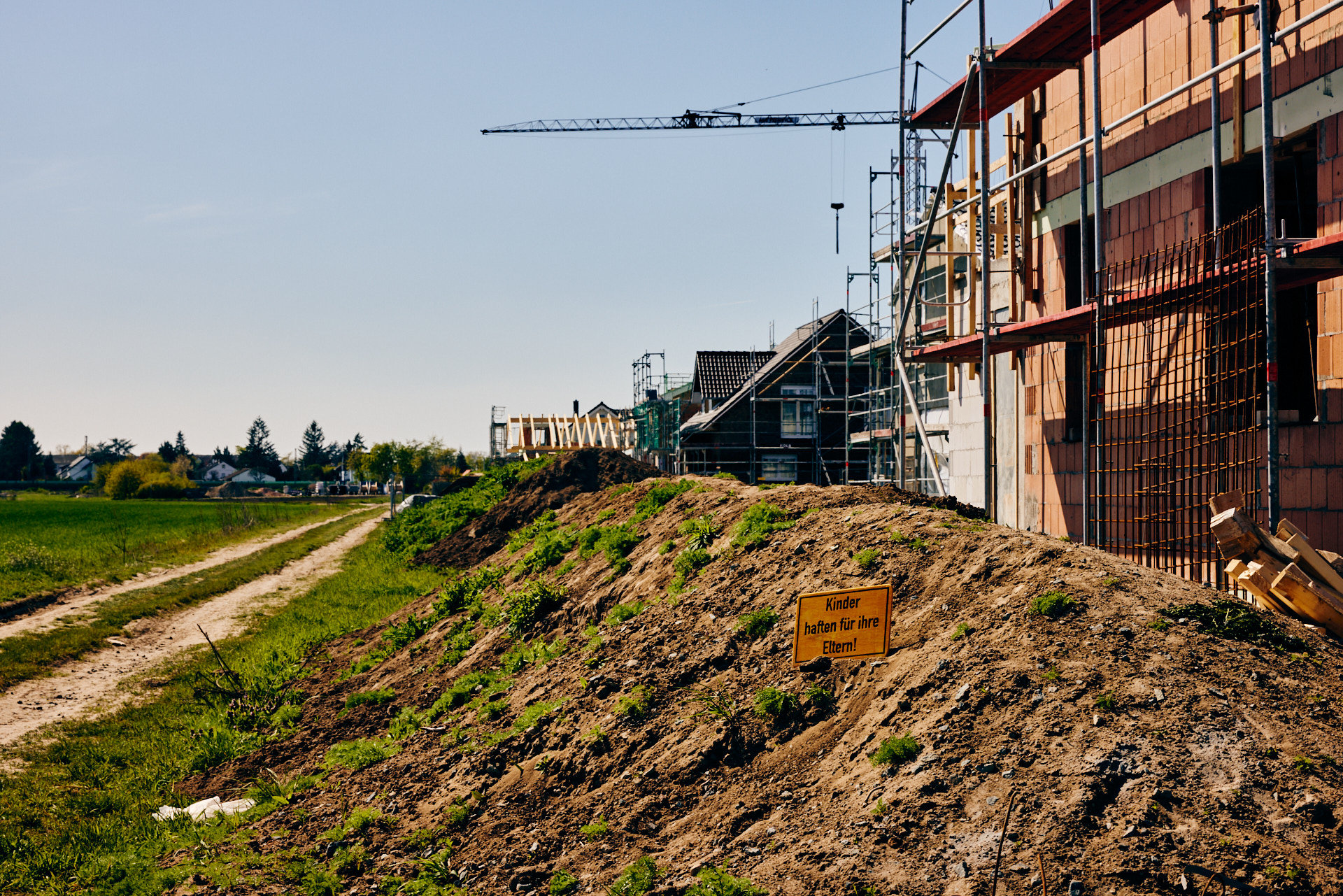
Soil cannot be increased and is necessary, among other things, for our food. However, “due to increasing numbers of inhabitants and at the same time increasing demand for living space per capita (...)”, as it says in the justification for the development plan for this residential area in southern Hesse, and due to the construction of roads and industry, 56 hectares of farmland and grassland as well as recreational and natural areas are destroyed every day in Germany. This corresponds to an area of around 78 football pitches, which are newly taken up every day. Although there are sustainability targets set by the federal government for land consumption originally to reach “only” 30 hectares per day by 2020 (postponed to 2030) and net zero by 2050 (circular land economy), there are no concrete actions to achieve the targets.
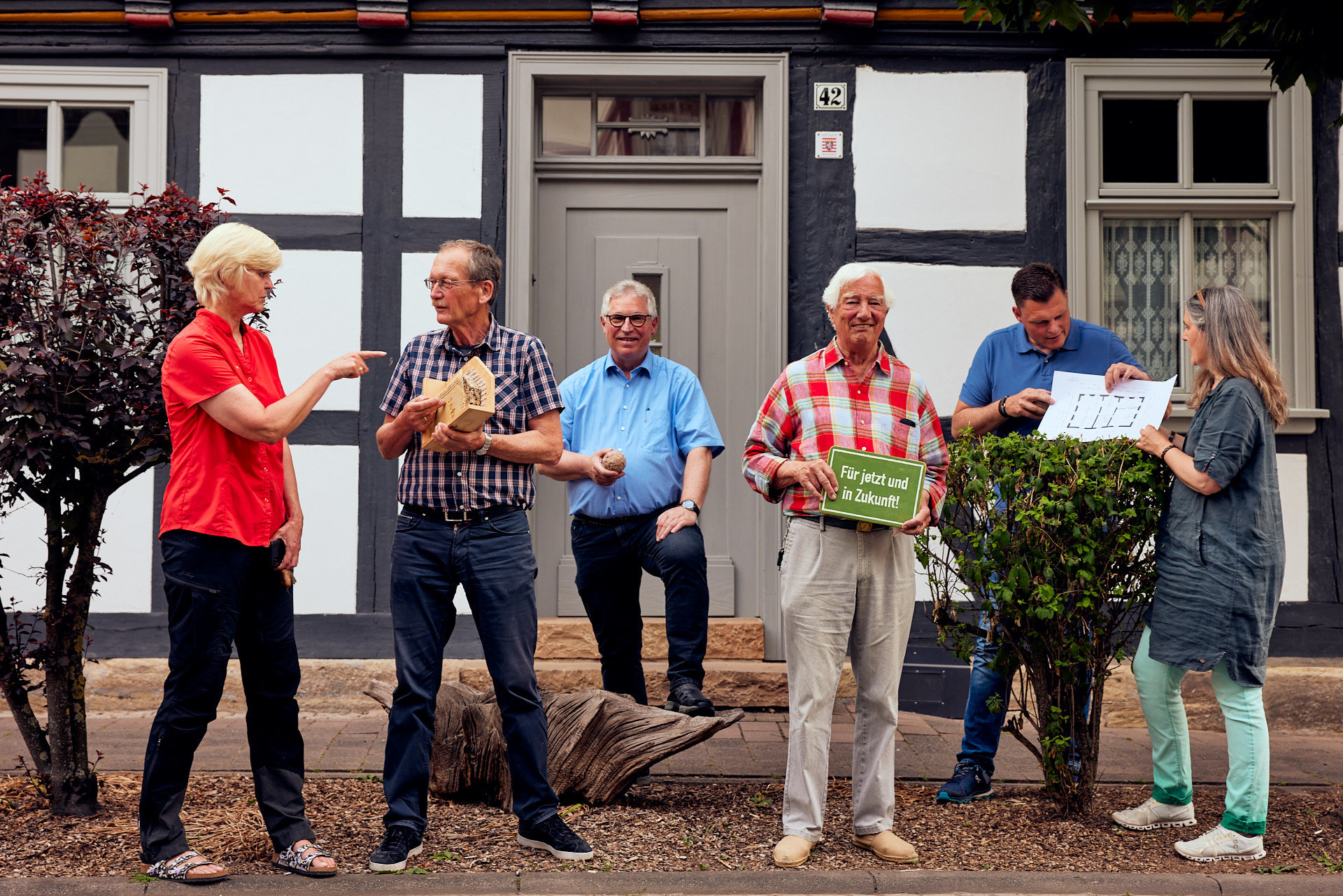
The easternmost town in Hesse was once the last or first navigable port on the Werra and came to a certain prosperity through the Stapelrecht, the right to demand that merchants offer their goods for sale. Since the mid-1990s, the number of inhabitants had fallen by almost a fifth by 2015. In other cities, people complain about the donut effect: decaying centres surrounded by ever new construction areas.
In Wanfried, the current mayor Wilhelm Gebhard (2nd from right) says: "It was clear to me that as long as there are still vacancies, there will be no new building area." So he joined the initiative founded in 2006 by interior designer Peter Geerk (†) and medical doctor Dr. Helmut Pippart at an early stage. They wanted to stop and eliminate the vacancy and decay in the centre of the half-timbered town of Wanfried. Geerk's university friend and architect Dieter Böttcher (on the photo with the sign) was quickly won over to help. Later, Jürgen Rödiger (2nd from left), who had returned home, learned about the initiative from the newspaper and liked it so much that he is now the spokesman for the "Citizens' Group for the Preservation of Wanfried Houses". And the group, which now has around 10 members, has been successful: thanks to a variety of measures, such as advertising the properties on a Dutch portal and regularly writing to around former 700 citizens, almost all vacancies have been eliminated and the infrastructure has been preserved. The fact that a half-timbered model house has been prepared also contributes to this. It shows with pleasure how modern living space can be created in existing buildings. The voluntary advice that new owners of old properties in Wanfried receive was also another reason for Birgit Pagel (far left) to decide to realise her dream in Wanfried. Concrete help was also offered by hands-on workshops on the correct renovation of half-timbered houses with ecological building materials.
Thank you
Thank you for visiting the exhibition online. Please feel free to send me your feedback and sign up for the newsletter, as the project will continue and evolve.
Many thanks also to those who supported the project and participated.
Contact
Send an email or give me a call: Niko Martin,
contact@nikomartin.de, Phone 06151 9 50 65 67.

Connect: